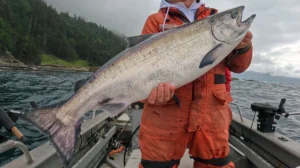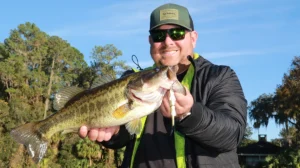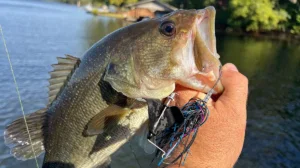Join Bassmaster Elite Series pro and midwestern river rat Bob Downey as he delivers a full breakdown on how to find bass in a river. Learn 4 mainstay elements to look for when seeking out productive spots on vast river systems.
FEATURED PRODUCT (retail links)
- FISH FINDER – Humminbird HELIX 12 CHIRP MEGA SI+ GPS G4N (dual): Buy at Bass Pro Shops | Buy at Tackle Warehouse
- TROLLING MOTOR – Minn Kota Ultrex QUEST: Buy at Bass Pro Shops
- MAPPING – Humminbird LakeMaster Premium VX Digital Map Chart Card: Buy at Bass Pro Shops | Buy at Humminbird
- SWIMBAIT – Rapala CrushCity “The Mayor”: Buy at Bass Pro Shops | Buy at Tackle Warehouse
- ROD – St. Croix Legend Tournament Casting Rod, 7’2″, Med-Hvy, Mod-Fast: Buy at Bass Pro Shops | Buy at Tackle Warehouse
- REEL – Daiwa Tatula Elite Casting Reel, 7.1:1: Buy at Tackle Warehouse
- LINE – Sufix Advance Fluorocarbon, 12-pound: Buy at Bass Pro Shops | Buy at Tackle Warehouse
IDENTIFYING SPAWNING AREAS
Downey emphasizes the importance of map study in his river fishing strategy. By pinpointing key spawning zones on a river system, anglers can locate ideal areas where bass thrive throughout the year. Both LakeMaster mapping and satellite imagery are extremely helpful in finding bass in a river. Whether it’s expansive backwaters or main channels, understanding these spawning habitats lays the foundation for where bass may be located.
LOCATING CLEAN WATER
When trying to find bass in a river, locating clean water is like striking gold. Downey shares insights into identifying clean ecosystems within river systems, where bass populations flourish. Locating slack-water areas and utilizing satellite imagery are monstrous components in finding the cleanest water on that particular system. From backwaters to feeder creeks, understanding these clean water havens enhances your chances of finding quality bass year-round.
MAXIMIZING CURRENT ADVANTAGES
Current is a vital factor in bass behavior on river systems. Downey discusses how to leverage current to your advantage, whether targeting smallmouth or largemouth bass. From heavy currents favored by smallmouth to subtle flows ideal for largemouth, understanding current dynamics is crucial for river anglers. To be able to find bass in a river, understanding the tendencies of these species can set you on the right path to success.
SEEING THE PRESENCE OF BAIT
Bait presence is a telltale sign of potential bass activity. Downey shares tips on identifying baitfish behavior using sight, sound, and even electronics. From shad to bluegills and everything in between, seeing the presence of bait is never a bad sign. Understanding the bait’s movement and habitat preferences guides anglers to productive fishing areas when learning how to find bass in a river.


![[VIDEO] Trailer Hitch Maintenance Made Simple](https://www.wired2fish.com/wp-content/uploads/2025/11/peterson-hitch-300x169.webp)
![[VIDEO] Huff’s 3 Must-Have Baits for Bass](https://www.wired2fish.com/wp-content/uploads/2025/11/huff-website-300x169.webp)
![[VIDEO] How to Store Spinnerbaits the Right Way](https://www.wired2fish.com/wp-content/uploads/2025/10/lawyer-website-300x169.webp)
![[VIDEO] How Dustin Connell Beats a Tough Bite](https://www.wired2fish.com/wp-content/uploads/2025/10/connell-website-300x169.webp)








